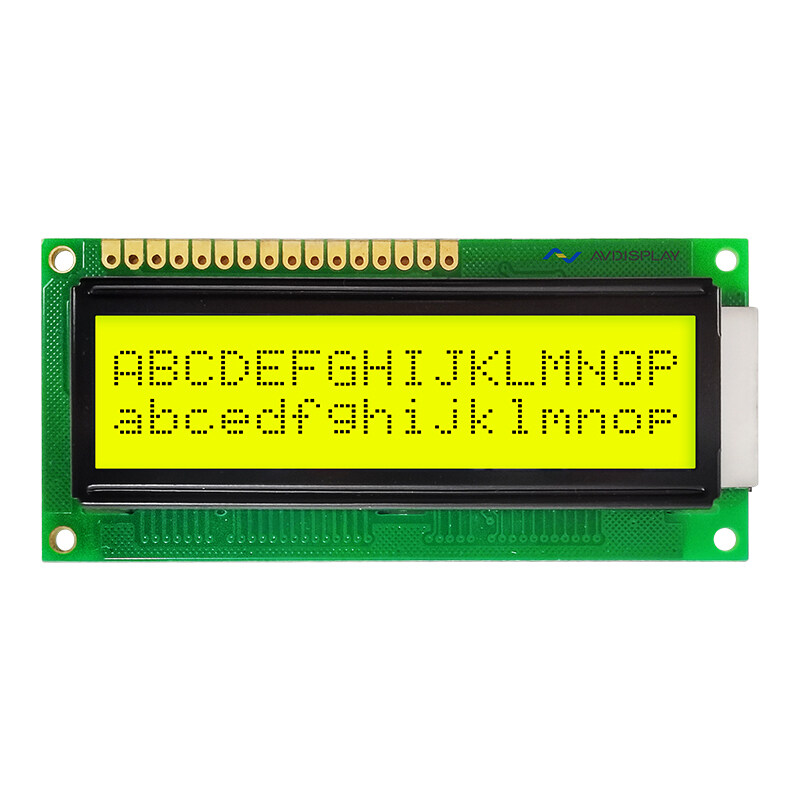Email format error
Email cannot be empty
Email already exists
6-20 characters(letters plus numbers only)
The password is inconsistent
Email format error
Email cannot be empty
Email does not exist
6-20 characters(letters plus numbers only)
The password is inconsistent


The COB Graphic Dot Matrix LCD Module (or COB LCD Module) is a popular choice for many types of electronic devices. It is used in everything from handheld gadgets to embedded systems. In this guide, we will explain how it works, its benefits, and where it is used. This will help you understand why it is such a useful display option for many projects.
A COB Graphic Dot Matrix LCD Module is a display technology that uses dots arranged in a grid to create images, text, or graphics. COB stands for "Chip-on-Board," which means the LED chips are placed directly onto the board. This design helps make the module smaller and more efficient.
This type of module is often used in devices where space is limited, and high-quality display is needed. Examples include small gadgets, remote controls, and portable electronics.
The COB Graphic Dot Matrix LCD Module works by controlling the liquid crystals in each dot. These dots, called pixels, can be turned on or off to form images.
Backlight: The module has a backlight, usually made of LEDs, that shines through the liquid crystal layer. This makes the display visible.
Matrix Layout: The dots in the COB LCD Module are arranged in rows and columns. Each row and column can be controlled individually to show different shapes and characters.
Driver ICs: The signals that control the dots are sent through driver ICs, which manage how the liquid crystals in each dot behave.
Displaying Text or Images: By adjusting the crystals, the module can display text, numbers, or even graphics.
The COB LCD Module has many advantages that make it a good choice for different devices:
One of the best things about the COB LCD Module is its small size. The "Chip-on-Board" technology helps reduce the overall size, which is great for small devices.
This module offers a clear, high-resolution display. The matrix of dots allows for detailed images and readable text. This is important for devices like medical tools, industrial machines, and consumer electronics.
Compared to other display types, the COB Graphic Dot Matrix LCD Module is cheaper, especially when bought in bulk. This makes it a good option for products with tight budgets.
These modules use less power than other displays like OLED screens. This is helpful for devices that run on batteries, allowing them to last longer.
The COB LCD Module is strong and can handle physical shocks. This makes it ideal for environments where the device might get knocked around, like in factories or outdoor settings.
The COB LCD Module is used in many different areas. Here are a few examples:
You will find the COB LCD Module in remote controls, calculators, and handheld devices. Its small size and clear display make it perfect for these kinds of products.
In factories and warehouses, these modules are used in control panels and machine displays. Their compact design and ability to show detailed information are important for industrial settings.
Devices like heart rate monitors and portable diagnostic tools use the COB LCD Module to show important health data. The clear display helps doctors and patients read the information easily.
In cars, these modules are used for dashboard displays and other small screens. The COB LCD Module works well in these systems because it is compact, clear, and reliable.
Smartwatches and fitness trackers often use this type of display. The small size and low power use are ideal for wearable technology, where space and battery life matter.
When picking the right COB LCD Module, here are some things you should consider:
The resolution decides how detailed the display will be. If you need fine text or sharp images, choose a module with high resolution. If you only need simple text or numbers, a lower resolution is fine.
The size of the COB LCD Module is important, especially for devices with limited space. Make sure the module fits well in the available space in your design.
Check that the module works with your microcontroller or processor. The most common types of connections are I2C, SPI, and parallel interfaces.
The viewing angle determines how easily you can see the display from different angles. Make sure the module has a good viewing angle if the device will be used in varying positions or environments.
If your device is battery-powered, choose a COB LCD Module that uses little power. This will help extend the battery life of your device.

Even the best COB LCD Modules can have problems sometimes. Here are a few common issues and how to fix them:
Flickering might happen if the power supply is unstable or the connections are loose. Check the power source and make sure all wires are connected properly.
If the display is dim, the backlight might not be working properly, or the contrast might be set too low. Check the backlight voltage and adjust the contrast if needed.
Sometimes the display might show the wrong text or images. This could be due to problems with the wiring or communication between the microcontroller and the display. Double-check the wiring and code.